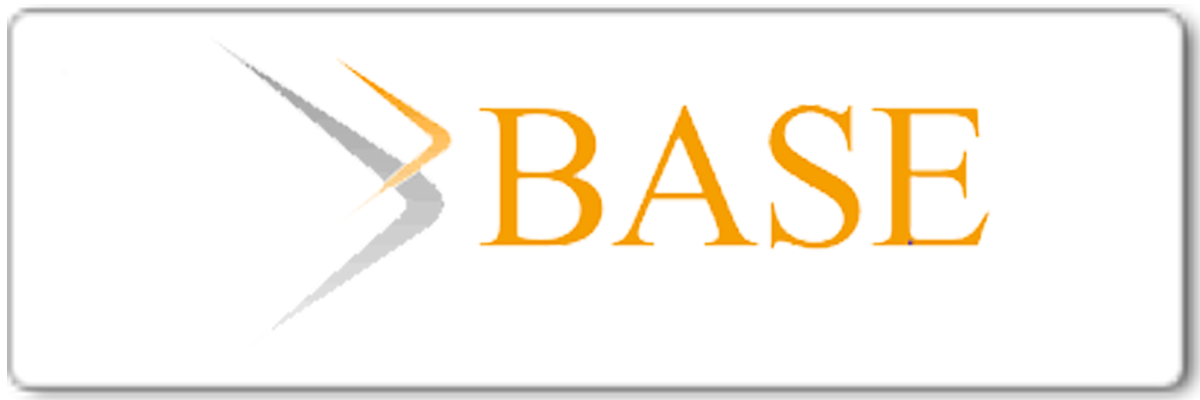Improving Students’ Problem Solving Ability Through Learning Based Videoscribe
Abstract
Keywords
Full Text:
PDF (English)References
Airey, J., & Linder, C. (2007). Disciplinary learning in a second language: A case study from university physics. In R. Wilkinson & V. Zegers (Eds.), Researching Content and Language Integration in Higher Education (pp. 161-171). Maastricht: Maastricht University Language Centre.
Lising, L., & Elby, A. (2005). The impact of epistemology on learning: A case study from introductory physics. American Journal of Physics, 73(4): 372-382.
Anderson, J., & Barnett, M. (2011). Using video games to support pre-service elementary teachers learning of basic physics principles. Journal of Science Education and Technology, 20(4): 347-362.
Bhakti, Y. B., Astuti, I. A. D., Sumarni, R. A., Sulisworo, D., & Toifur, M. (2019). Flipped classroom as a millennial teaching model. Indonesian Review of physics, 2(1): 22-27.
Astuti, I. A. D., Sulisworo, D., & Firdaus, T. (2019, February). What is the student response to using the weblogs for learning resources?. In Journal of Physics: Conference Series (Vol. 1157, No. 3, p. 032012). IOP Publishing.
Batlolona, J. R., Baskar, C., Kurnaz, M. A., & Leasa, M. (2018). The improvement of problem-solving skills and physics concept mastery on temperature and heat topic. Jurnal Pendidikan IPA Indonesia, 7(3): 273-279.
Sulisworo, D., & Sutadi, N. (2017). Science Learning Cycle Method to Enhance the Conceptual Understanding and the Learning Independence on Physics Learning. International Journal of Evaluation and Research in Education, 6(1): 64-70.
Azizah, R., Yuliati, L., & Latifah, E. (2015). Kesulitan pemecahan masalah fisika pada siswa SMA. Jurnal penelitian fisika dan aplikasinya (JPFA), 5(2): 44-50.
Türkay, S. (2016). The effects of whiteboard animations on retention and subjective experiences when learning advanced physics topics. Computers & Education, 98: 102-114.
Moreno, R., & Mayer, R. (2007). Interactive multimodal learning environments. Educational psychology review, 19(3): 309-326.
Mayer, R. E., & Moreno, R. (2002). Animation as an aid to multimedia learning. Educational psychology review, 14(1): 87-99.
Limbong, E. (2017). Designing and Developing Supplemental Technology of PACI Model Materials through Blended Learning Methods. Celt: A Journal of Culture, English Language Teaching & Literature, 16(2): 271-304.
Derry, S. J., Pea, R. D., Barron, B., Engle, R. A., Erickson, F., Goldman, R., ... & Sherin, B. L. (2010). Conducting video research in the learning sciences: Guidance on selection, analysis, technology, and ethics. The Journal of the Learning Sciences, 19(1): 3-53.
Octavianingrum, D. (2016). Pengembangan media audio visual sparkol videoscribe dalam pembelajaran mengelola pertemuan/rapat di lembaga pendidikan profesi (lpp) ipmi kusuma bangsa Surakarta jurusan administrasi perkantoran (Doctoral dissertation, UNS (Sebelas Maret University)).
Sparkol. (2019). Videoscribe for Education. Sparkol group.
Rahmawati, F., Soegimin, W. W., & Kardi, S. (2016). Pengembangan perangkat pembelajaran fisika model inkuiri terbimbing berbantuan videoscribe pada materi kalor untuk meningkatkan hasil belajar siswa SMAN 1 Kedungwaru. JPPS (Jurnal Penelitian Pendidikan Sains), 5(2): 1039-1047.
Alias, N., & Siraj, S. (2012). Effectiveness of Isman instructional design model in developing physics module based on learning style and appropriate technology. Procedia-Social and Behavioral Sciences, 64: 12-17.
Astuti, D. P., Bhakti, Y. B., & Astuti, I. A. D. (2019, March). Developing Adobe Flash-based mathematics learning media for 7th-grade students of junior high school. In Journal of Physics: Conference Series (Vol. 1188, No. 1, p. 012098). IOP Publishing.
Erniwati, E., Eso, R., & Rahmia, S. (2015). Penggunaan Media Praktikum Berbasis Video Dalam Pembelajaran IPA-Fisika Untuk Meningkatkan Hasil Belajar Siswa Pada Materi Pokok Suhu dan Perubahannya. Jurnal Sains dan Pendidikan Fisika, 10(3).
Kirkgoz, Y. (2011). A Blended Learning Study on Implementing Video Recorded Speaking Tasks in Task-Based Classroom Instruction. Turkish Online Journal Of Educational Technology-TOJET, 10(4): 1-13.
Yusup, M., Aini, Q., & Pertiwi, K. D. (2016). Media Audio Visual Menggunakan Videoscribe Sebagai Penyajian Informasi Pembelajaran Pada Kelas Sistem Operasi. Technomedia Journal, 1(1): 126-138.
Fautley, M. (2013). The potential of audio and video for formative assessment purposes in music education in the lower secondary school in England: Issues arising from a small-scale study of trainee music teachers. Journal of Music, Technology & Education, 6(1): 29-42.
Leasa, M., Syam, F. A., Sayyadi, M., & Batlolona, J. R. (2020). Inovasi Pembelajaran Bagi Guru Sekolah Dasar Dalam Mendesain Video Pembelajaran. Publikasi Pendidikan, 10(1): 80-87.
Zhang, D., Zhou, L., Briggs, R. O., & Nunamaker Jr, J. F. (2006). Instructional video in e-learning: Assessing the impact of interactive video on learning effectiveness. Information & management, 43(1): 15-27.
Ljubojevic, M., Vaskovic, V., Stankovic, S., & Vaskovic, J. (2014). Using supplementary video in multimedia instruction as a teaching tool to increase efficiency of learning and quality of experience. International Review of Research in Open and Distributed Learning, 15(3): 275-291.
Pintado, M., & Kathalina, C. (2017). The use of Powtoon and VideoScribe in a flipped classroom to improve listening and speaking skills on distance undergraduate students (Master's thesis).
Yeo, S., Loss, R., Zadnik, M., Harrison, A., & Treagust, D. (2004). What do students really learn from interactive multimedia? A physics case study. American Journal of Physics, 72(10): 1351-1358.
Mayer, R. E., Dow, G. T., & Mayer, S. (2003). Multimedia learning in an interactive self-explaining environment: What works in the design of agent-based microworlds?. Journal of educational psychology, 95(4): 806.
Mayer, R. E. (2003). The promise of multimedia learning: using the same instructional design methods across different media. Learning and instruction, 13(2): 125-139.
Caspi, A., Gorsky, P., & Privman, M. (2005). Viewing comprehension: Students’ learning preferences and strategies when studying from video. Instructional Science, 33(1): 31-47.
Stelzer, T., Gladding, G., Mestre, J. P., & Brookes, D. T. (2009). Comparing the efficacy of multimedia modules with traditional textbooks for learning introductory physics content. American Journal of Physics, 77(2): 184-190.
DOI: http://dx.doi.org/10.26737/jipf.v5i2.1595
Refbacks
- There are currently no refbacks.
Copyright (c) 2020 Yoga Budi Bhakti, Irnin Agustina Dwi Astuti, Eva Yuni Rahmawati

This work is licensed under a Creative Commons Attribution-NonCommercial 4.0 International License.
Publisher
Institute of Managing and Publishing of Scientific Journals
STKIP Singkawang
Jl. STKIP, Kelurahan Naram, Kecamatan Singkawang Utara, Kota Singkawang, Kalimantan Barat, Indonesia
Website: http://journal.stkipsingkawang.ac.id/index.php/JIPF
Email: [email protected]
JIPF Indexed by:
Copyright (c) JIPF (Jurnal Ilmu Pendidikan Fisika)
ISSN 2477-8451 (Online) and ISSN 2477-5959 (Print)































